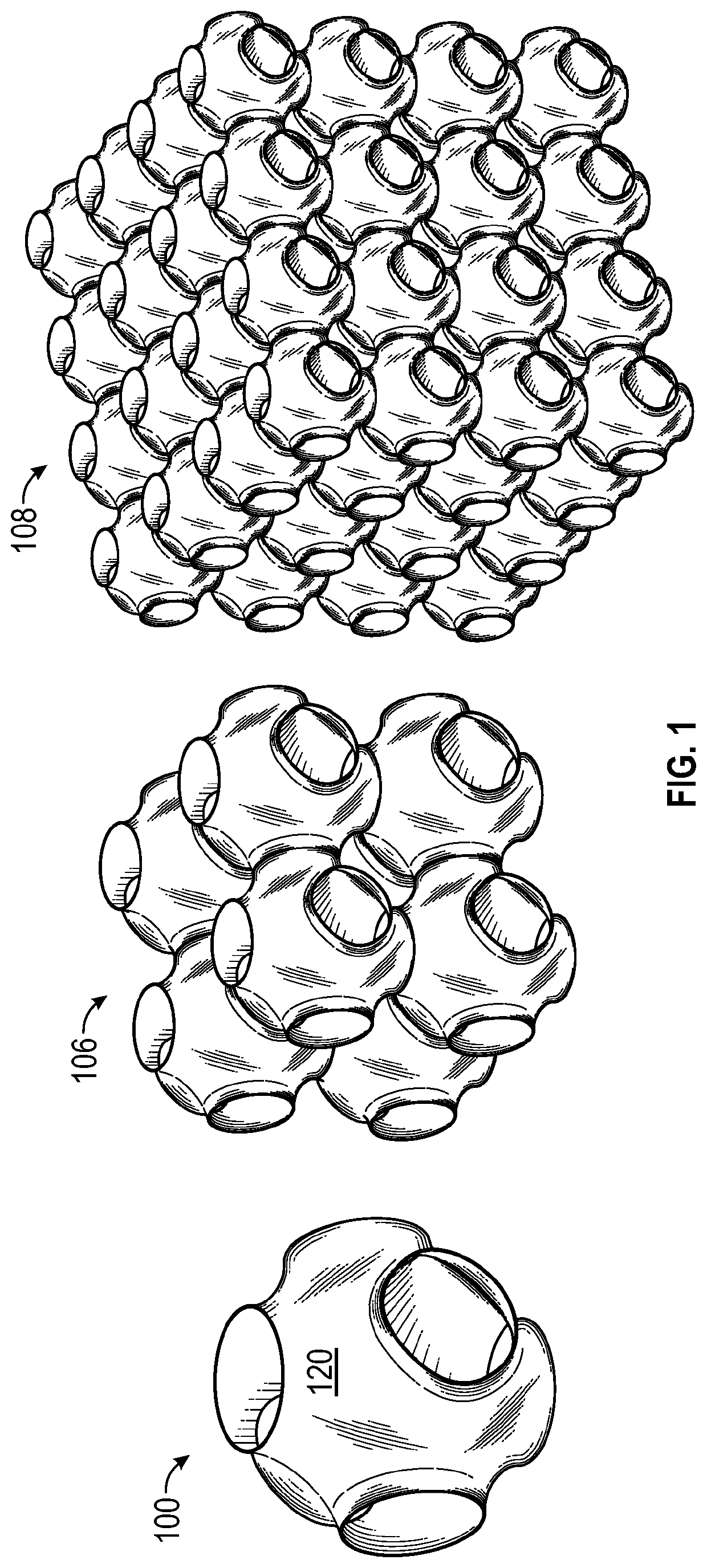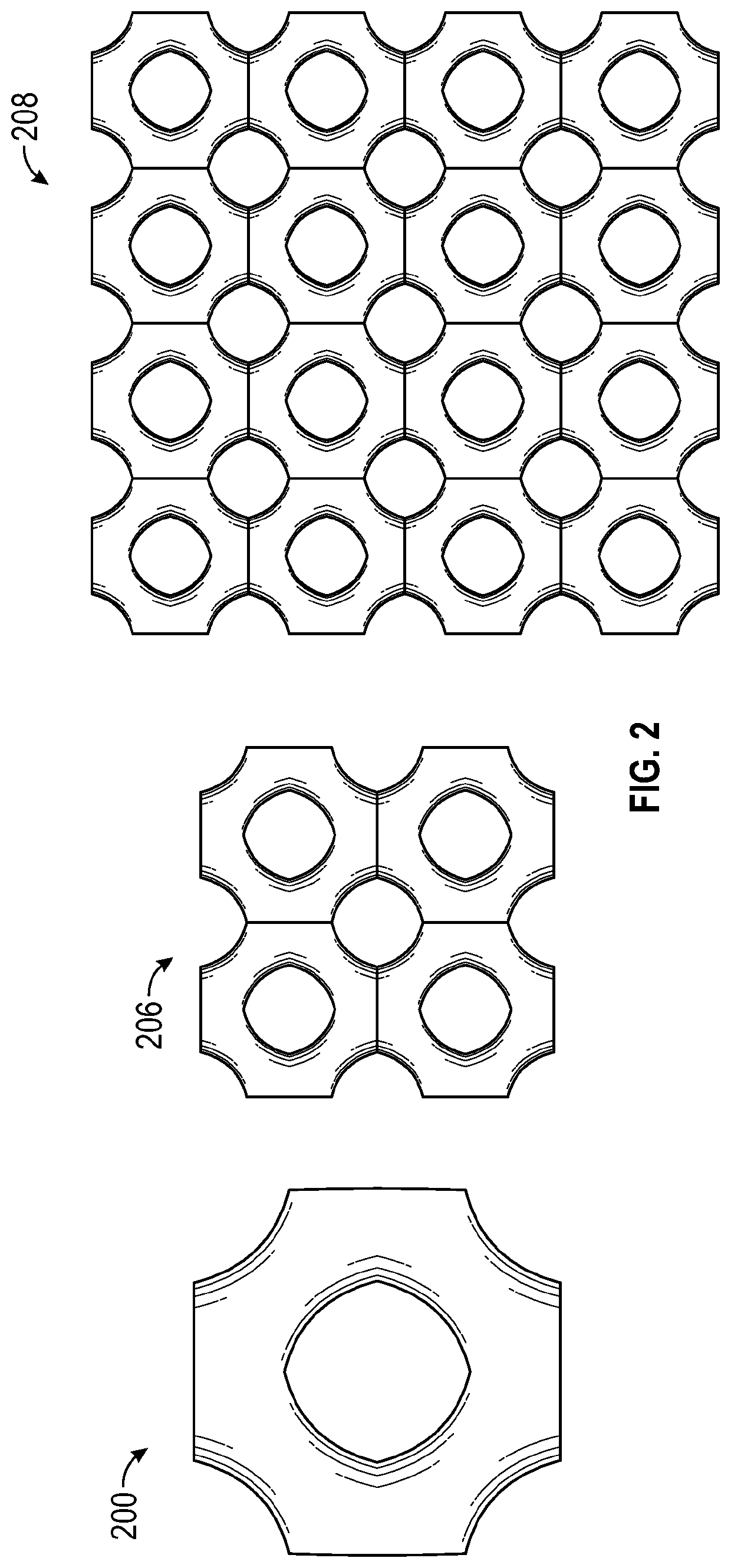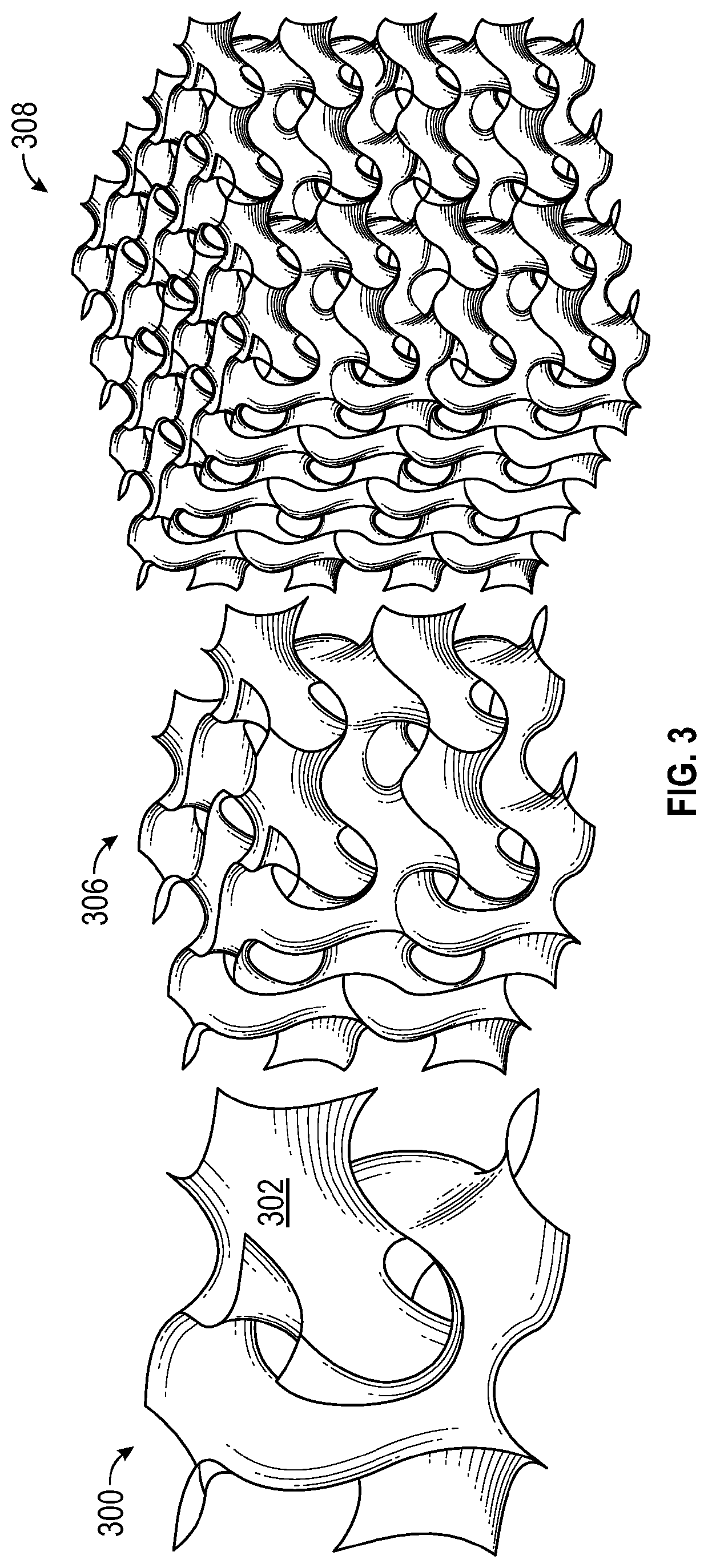Monolithic bicontinuous labyrinth structures and methods for their manufacture
a monolithic bicontinuous core and labyrinth technology, applied in the direction of additive manufacturing, manufacturing tools, light and heating apparatus, etc., can solve the problems of limited heat exchanger core design and manufacturing methods, requiring extensive brazing and/or welding, and overhanging surfaces that are not well suited, etc., to achieve efficient manufacturability
- Summary
- Abstract
- Description
- Claims
- Application Information
AI Technical Summary
Benefits of technology
Problems solved by technology
Method used
Image
Examples
Embodiment Construction
[0029]The following detailed description of the invention is merely exemplary in nature and is not intended to limit the invention or the application and uses of the invention. Furthermore, there is no intention to be bound by any theory presented in the preceding background or the following detailed description.
[0030]Various embodiments of the present invention relate to monolithic bi-continuous core structures and additive manufacturing (AM) methods for their fabrication. An important design consideration which enables AM fabrication of such cores involves the selection of an appropriate three-dimensional unit cell, and thereafter configuring the unit cell parameters to optimize thermal, material, and mechanical considerations in the context of a particular application (e.g., to manipulate the volume ratio between the two fluids). By periodically repeating a unit cell with minimal mean curvature, a continuous monolithic core forms two or more independent labyrinths, which may be f...
PUM
| Property | Measurement | Unit |
|---|---|---|
| degree angles | aaaaa | aaaaa |
| unit cell | aaaaa | aaaaa |
| surface area | aaaaa | aaaaa |
Abstract
Description
Claims
Application Information
 Login to View More
Login to View More - R&D
- Intellectual Property
- Life Sciences
- Materials
- Tech Scout
- Unparalleled Data Quality
- Higher Quality Content
- 60% Fewer Hallucinations
Browse by: Latest US Patents, China's latest patents, Technical Efficacy Thesaurus, Application Domain, Technology Topic, Popular Technical Reports.
© 2025 PatSnap. All rights reserved.Legal|Privacy policy|Modern Slavery Act Transparency Statement|Sitemap|About US| Contact US: help@patsnap.com



